
Who Is The Primary Grocery Shopper In Canada?
Sep 19, 2022 11:42:31 AM | Jeff Doucette
Mobile Research,
Grocery,
Insights Report
We all know that grocery shopping routines and responsibilities have shifted a lot lately, but one of the main questions we hear is whether men's role in grocery shopping is increasing and what sort of split we should consider when balancing research groups across Males and Females.
Field Agent Canada surveyed 4,617 Canadian households to look at how the Primary Grocery shopper varies by generation, the presence of children in the household, by region and by urbanity.
Primary Shopper - National Split
One key overall insight is that on a National level, 17.5% of households reported that grocery shopping is evenly split between two persons and this is an important figure to take into account. This "tag team" approach is an important segment of grocery shopping behaviour and highlights that looking at just Female / Male splits may be too crude of an approach.
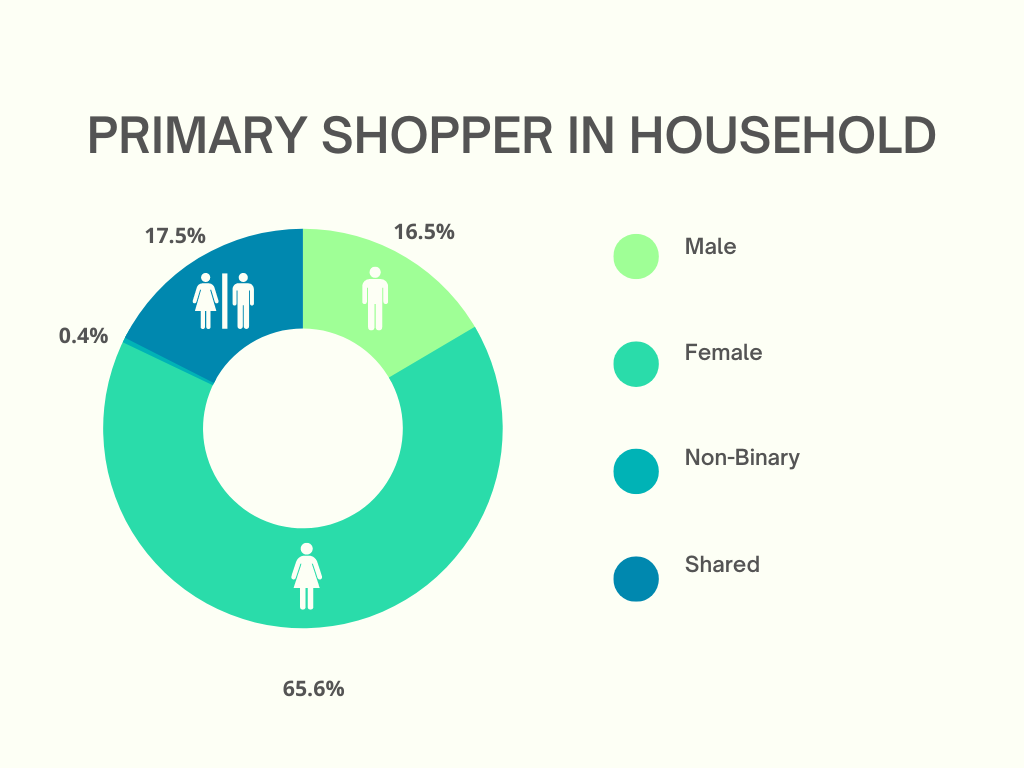
Split by Generation
When we look at the households by generation we find some unique splits across the four major cohorts heading households in Canada. The highest level of shared responsibility for grocery shopping is among Boomers, many of whom are of retirement age. We also see that Gen X Males are most likely to be the primary grocery shopper, while Millennial Males are least likely to be the primary grocery shopper in the household.
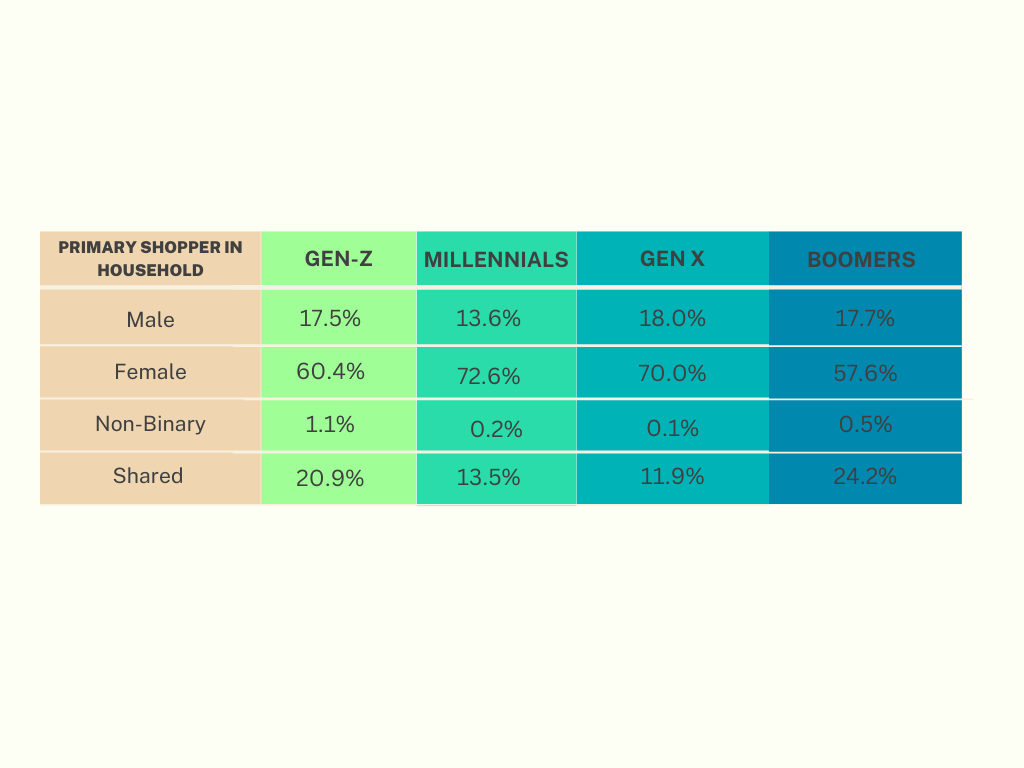
Split by Children in Household
When we look specifically at households with children under the age of 18 we see that a Female is most likely to be the primary grocery shopper with this being the case in three quarters of households. In households where no children are present we see higher levels of Male primary grocery shoppers as well as higher levels of shared grocery shopping responsibility.
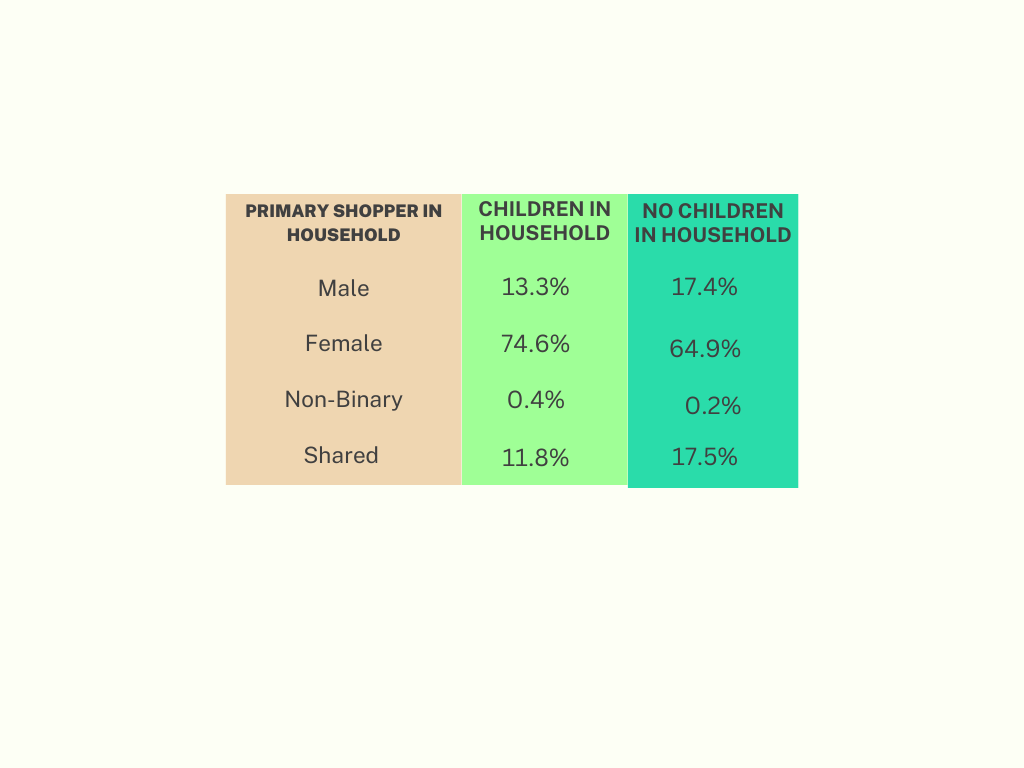
Split by Region
Quebec is the market that is the least likely to have a Female primary grocery shopper but women still make up two-thirds of primary grocery shoppers in La Belle Province. In British Columbia we find the highest levels of Male primary grocery shoppers (19%) whil the Prairie provinces is the region where Males are least likely to be the primary grocery shopper (12%).
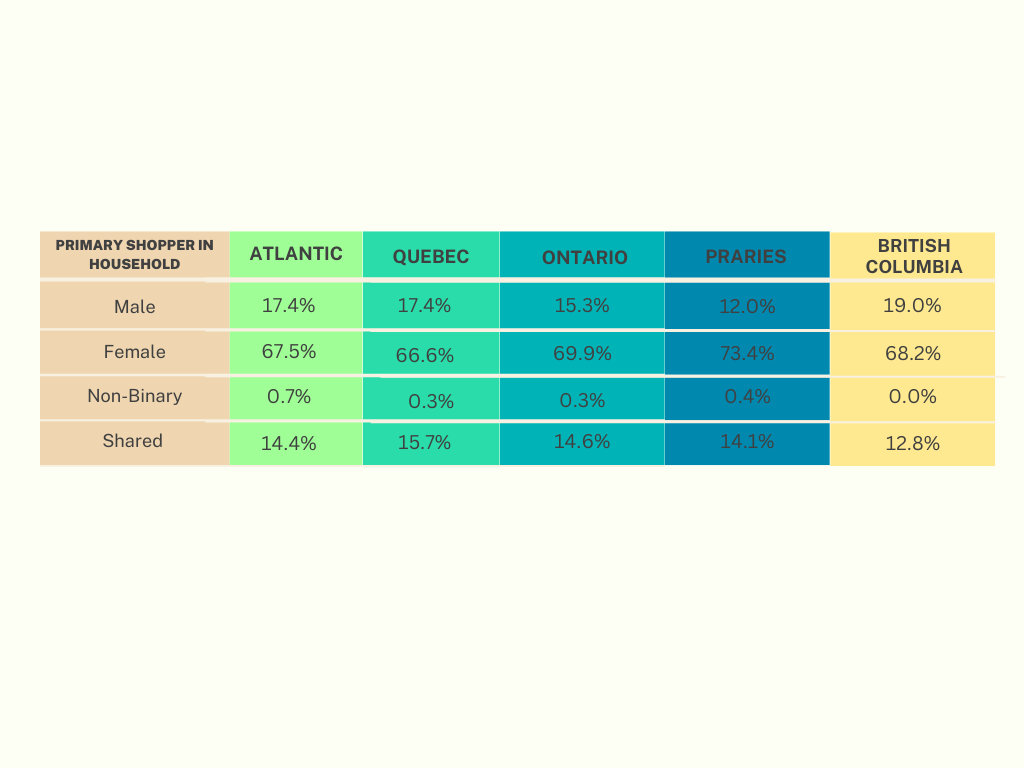
Split by Urbanity
When we look at the size of communities that people live in we see the highest proportion of Male primary grocery shoppers in large cities (16.6%). Interestingly the highest level of shared grocery shopping responsibility is in rural communities, potentially being driven by increased travel distances to major shopping areas where grocery shopping may involve a "trip to town". Females have the highest likelihood of being the primary grocery shopper in Medium sized towns and cities at 72.9%.
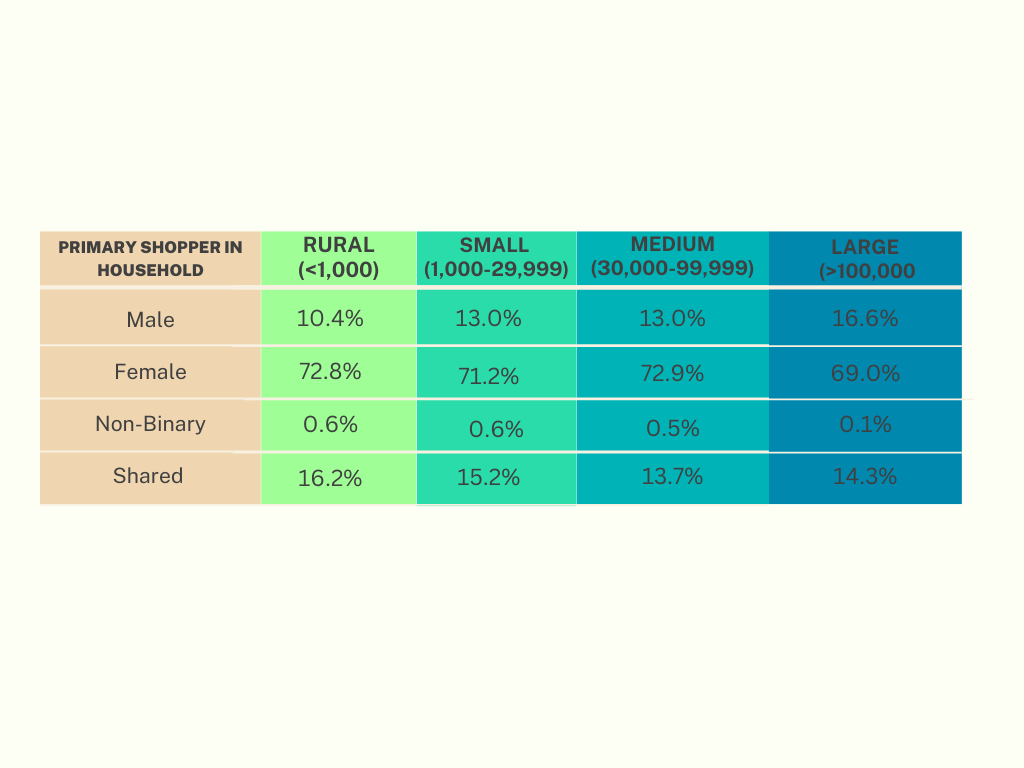
Notes:
- 4,617 households from across Canada
- Respondents from ages 18 to 76
- Results weighted to match Canadian population


